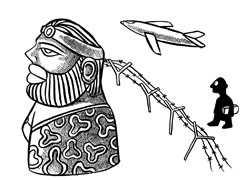Ramalingam Kalirajan |10876 Answers |Ask -Follow
Mutual Funds, Financial Planning Expert - Answered on May 09, 2024
He has an MBA in finance from the University of Madras and is a certified financial planner.
He is the director and chief financial planner at Holistic Investment, a Chennai-based firm that offers financial planning and wealth management advice.... more

Hello Sir, I am 46 yrs old guy with a family of 2 children 10yrs and 3yrs. i have a 16 lakhs homeloan outstanding. i have created a small saving fund of about 11.36 lakhs in investments in the following funds quant active direct, hdfc flaxicap, Nippon flexicap, hdfc divident fund, holidng about 5.19 lakhs in stocks. I also invest into pension fund about 5000 per month and sip in the above mutual fund are 45000 per month. please suggest the investment strategy at my age and I would like to retire in 50 yrs.
Considering your age and retirement goal of 50 years, here's a suggested investment strategy:
1. Prioritize Debt Reduction: Since you have a home loan outstanding, prioritize paying it off as soon as possible. Allocate a portion of your savings towards clearing this debt to reduce financial burden and free up cash flow for other investments.
2. Diversify Investments: Your current investment portfolio seems heavily skewed towards equity with a mix of mutual funds and stocks. While equity investments offer growth potential, they also come with higher risk. Consider diversifying into less volatile assets like debt funds, PPF, or FDs to balance risk.
3. Review and Adjust Mutual Fund Portfolio: Evaluate the performance of your mutual funds periodically and consider consolidating or reallocating funds based on their performance and your investment goals. Consider consulting with a Certified Financial Planner (CFP) to ensure your portfolio aligns with your risk tolerance and financial objectives.
4. Continue SIPs and Pension Fund Contributions: Your SIPs and pension fund contributions are commendable. Continue investing regularly, but ensure you're comfortable with the amount allocated to each fund and adjust as necessary over time.
5. Emergency Fund: Ensure you have an emergency fund equivalent to at least 6-12 months of living expenses in a liquid and accessible account to cover unexpected expenses or income disruptions.
6. Plan for Children's Education and Your Retirement: Factor in future expenses like your children's education and your retirement needs while planning your investments. Start separate funds for these goals to ensure you're adequately prepared when the time comes.
7. Regular Reviews: Regularly review your investment portfolio and financial goals to make adjustments as needed. Life circumstances and market conditions change, so staying proactive is key to long-term financial success.
Remember, investing is a journey, and it's essential to stay disciplined and informed. With careful planning and guidance from a CFP, you can navigate towards a secure financial future for you and your family.
Best Regards,
K. Ramalingam, MBA, CFP,
Chief Financial Planner,
www.holisticinvestment.in
You may like to see similar questions and answers below
Ramalingam Kalirajan |10876 Answers |Ask -Follow
Mutual Funds, Financial Planning Expert - Answered on Dec 23, 2024
Milind Vadjikar | Answer |Ask -Follow
Insurance, Stocks, MF, PF Expert - Answered on Dec 19, 2024
Ramalingam Kalirajan |10876 Answers |Ask -Follow
Mutual Funds, Financial Planning Expert - Answered on Jul 09, 2025
Ramalingam Kalirajan |10876 Answers |Ask -Follow
Mutual Funds, Financial Planning Expert - Answered on Jul 30, 2025
Shalini Singh |180 Answers |Ask -Follow
Dating Coach - Answered on Dec 10, 2025
Radheshyam Zanwar |6740 Answers |Ask -Follow
MHT-CET, IIT-JEE, NEET-UG Expert - Answered on Dec 09, 2025
Naveenn Kummar |234 Answers |Ask -Follow
Financial Planner, MF, Insurance Expert - Answered on Dec 09, 2025
Ramalingam Kalirajan |10876 Answers |Ask -Follow
Mutual Funds, Financial Planning Expert - Answered on Dec 09, 2025
Ramalingam Kalirajan |10876 Answers |Ask -Follow
Mutual Funds, Financial Planning Expert - Answered on Dec 09, 2025
Radheshyam Zanwar |6740 Answers |Ask -Follow
MHT-CET, IIT-JEE, NEET-UG Expert - Answered on Dec 09, 2025
Radheshyam Zanwar |6740 Answers |Ask -Follow
MHT-CET, IIT-JEE, NEET-UG Expert - Answered on Dec 09, 2025
Nayagam P P |10853 Answers |Ask -Follow
Career Counsellor - Answered on Dec 09, 2025
Mayank Chandel |2569 Answers |Ask -Follow
IIT-JEE, NEET-UG, SAT, CLAT, CA, CS Exam Expert - Answered on Dec 08, 2025
Mayank Chandel |2569 Answers |Ask -Follow
IIT-JEE, NEET-UG, SAT, CLAT, CA, CS Exam Expert - Answered on Dec 08, 2025
























